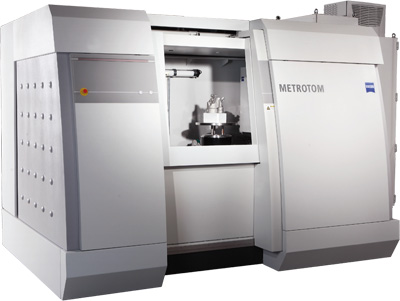You used to have to go to a hospital for a Computed Tomography (CT) scan, but now the technology is crossing the great divide and has been widely adopted for industrial applications. With 3D printed applications becoming a part of everyday life, CT scanners will follow suit.
The reason is clear: a CT scanner can analyse a structure without causing damage. So if you need to check the integrity of a structure without pulling it apart then a scanner is ideal.
That is useful in the pharmaceutical and food industries, where it’s essential to have an airtight seal in packaging. Inline scanners can process huge amounts of pill bottles or steaks, which will highlight quality control issues. It also has a vast number of manufacturing applications.
As more components are made in on piece, analysing the whole structure becomes increasingly important as it is harder to spot check individual components.
Industry borrows from healthcare
Industrial scanners work in exactly the same way as their medical counterparts. They take readings from a vast array of angles and create a Voxel-based 3D point cloud from the CT grey scale.
Once the CT scanner has the point cloud in place, you can then compare that to the CAD plans to ensure total accuracy. This means a company can analyse a highly complex 3D printed item for accurate internal dimensions in minutes.
They can also reverse engineer a product to create a CAD design, or even a 3D printed copy. The combination of a CT scanner and a 3D printer, then, creates a modern day replicator. It means any part can be recreated without the original plans.
Scanners handle items with care
The scanner does not even need direct contact, as it uses lasers to take the measurements. This matters when you’re dealing with exceptionally fragile material or even a valuable antique.
If that seems a little far-fetched then consider this, the art community has turned to CT scanners to help validate valuable works and expose forgeries that had slipped past an expert eye. A CT scanner can also reveal the structural integrity, or lack thereof, of an important work that could need urgent restoration.
The actual uses for CT scanning are mind-blowing, when you start to think about the potential. Fashion designers are now scanning models to create the perfect fit for their clothes, artists are scanning people to create perfect lifelike busts and statues and these are just the frivolous uses.
This is life-saving tech
In the manufacturing industry we can now check for faults that could be the cause of a potentially lethal failure in metal or plastic parts.
In aerospace and automotive design, engineers can use a CT scanner as part of a package to design and test new components virtually. This cuts production costs, saves time and will inevitably result in a more efficient final product. Obviously they can also check the integrity of parts, too, which helps improve safety. Engineers can check parts after each test cycle, spot faults in the making and change the part accordingly.
Metal castings companies can check for air bubbles in the finished product, which can easily develop into a fault. 3D printed materials, meanwhile, often rely on a matrix surrounded by solid material and a CT scanner is one of the few ways the finished structure can be analysed without cutting into it.
CT scanners go long range
Long range scanners can even take detailed shots of bridges, plots of land and even a nuclear facility. This helps with building projects, repair works and it can even help save lives by saving workers having contact with hazardous material to take the measurements manually. Constant CT scans could even prevent serious accidents by checking pipe alignment and the integrity of critical components, or even a whole building.
Of course this wide range of applications means that industrial CT scanners will have to be equally as flexible. That means they’re now available in a variety of sizes, from table-top lab items to huge industrial units that can accommodate aviation parts. Portable CT scanners are also becoming more popular as people sometimes need to make measurements in situ.
The future is bright
The future of CT scanning is arguably as exciting as 3D printing itself and the potential is incredible. As the price comes down and the capability goes up, we could soon see CT scanners in almost every workplace as companies test the 3D objects they are printing every day.
It’s an exciting future, we’re just glad to be a part of it.


Leave A Comment